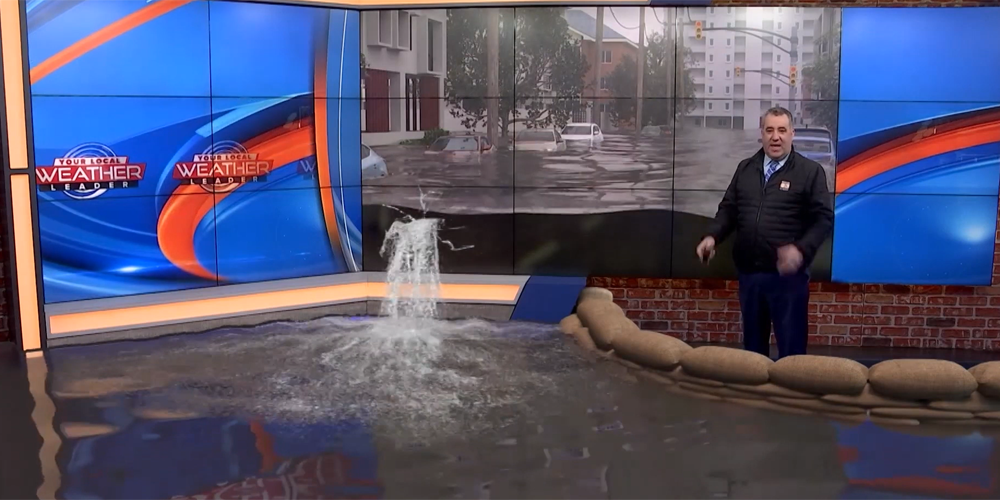
Video Walls, AR Arsenal Improves As Prices Fall

Picture this: A window on an LED wall “looks out” on local floodwaters during a weather segment; as the water rises, the “window” starts cracking. Augmented reality takes over, and water appears to flood into the studio.
Such augmented reality (AR) elements spilling out of the canvas of an LED wall are giving broadcasters new and creative ways to illustrate weather, news and sports stories.
The technology — from the LED systems being installed to the visualization engines driving the image rendering — continues to improve, workflows are being optimized, and dropping costs are putting augmented reality within reach for smaller stations.
Michael Convey, media product manager for The Weather Company, says broadcasters are using 3D visuals to enhance their on-air segments.
“The Weather Channel has kind of led the way,” he says, noting it uses several tools including The Weather Company’s Max Reality product. “They’re really taking advantage of the full capabilities of extended reality (XR).”
He says he’s seen a big surge in customers adding XR into their weather programs.
“Maybe one-third of customers have some sort of reality, augmented or mixed,” Convey says.
He says 3D visuals are useful in helping audiences understand a unique weather situation. Customers have used graphics from The Weather Company along with an LED screen for simulated explainers, such as a window on the LED screen with the glass breaking open and water flooding into the studio.
“The most effective way to use this is to bring the outside indoors,” Convey says.
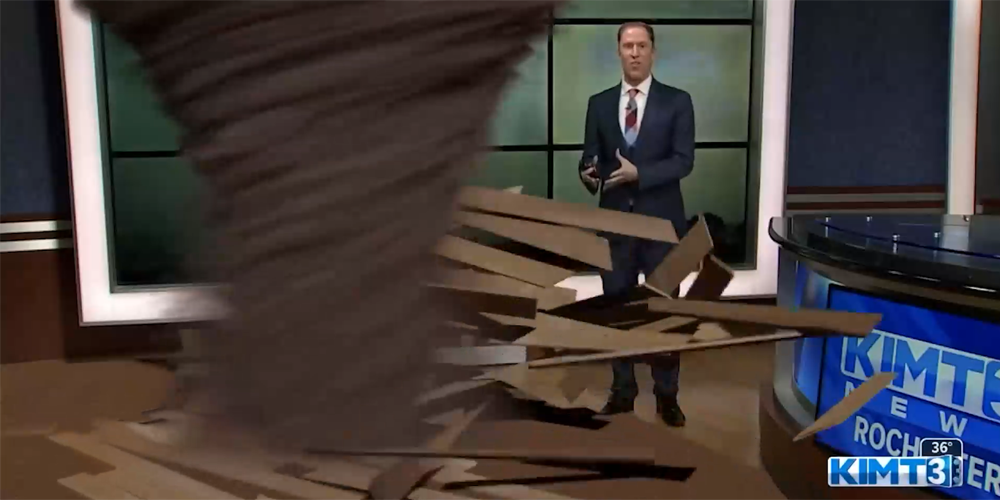
This tornado ripping up floor boards in a studio is an example of bringing the weather into the studio and having it impact the physical set in some way. (Source: The Weather Company)
The Weather Company’s Max Reality tool uses newer gaming technology but has also uses its own renderer. He says the system allows users to “drop things into the system, and it just works.” From better ways to import 3D models to more light sources that create shadowing for a more realistic look, he says Max Reality helps users “make it look more realistic without a lot of work.”
It can also pick up camera tracking and supports the FreeD protocol, which sends camera positioning data from the camera to a VR production system.
“Camera tracking is not required for effective augmented reality, but it certainly can help with the illusion of making it real,” Convey says.
Vizrt CTO Gerhard Lang says customers are using AR elements to better tell their stories. Those elements, he says, are often data driven, such as graphics for stocks or stats for athletes, and they can appear next to the presenter on set.
“Sports guys are always enthusiastic about those technologies,” he says. “It makes sports broadcasts much more interesting visually.”
The technology also enables broadcasters to “teleport people as AR elements into the studio” for a “live interview situation even if the person is connected remotely,” Lang says.
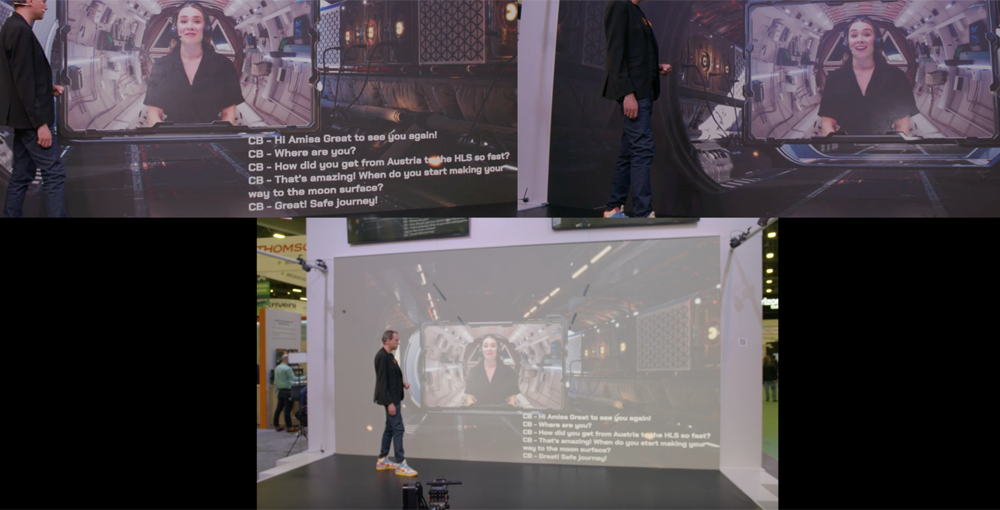
Vizrt’s virtual window on display during this year’s NAB Show.
Vizrt will soon release a new update that revamps how XR is handled and makes XR set set-up easier, Lang says. XR Set Express uses a combination of virtual windows plus AR elements to create a virtual environment using LED walls and floors, he says.
“It utilizes LED walls as an extension to reality,” he says.
There’s another area where Vizrt is trying to make graphics easier for broadcasters. The company is simplifying content output to different formats. For instance, if a broadcaster shows AR statistics next to a football player, there are a couple of choices about how that visual can appear on different platforms.
“If they want to broadcast the same thing on TikTok, they have to reduce all the information, probably to the name, and forget the stats, or have the stats roll,” Lang says.
Vizrt is using artificial intelligence to streamline that part of the workflow, he says.
Ben Davenport, Pixotope’s VP of global marketing, says one of the projects the company recently delivered was for ESPN HQ’s Catalyst Stage virtual studio. With the new facility, the broadcaster can blend physical and virtual elements, increase studio utilization, create “amazing” graphics and enhance storytelling, he says.
While some broadcasters are comfortable with bringing XR into their studios, some might have some qualms, he says.
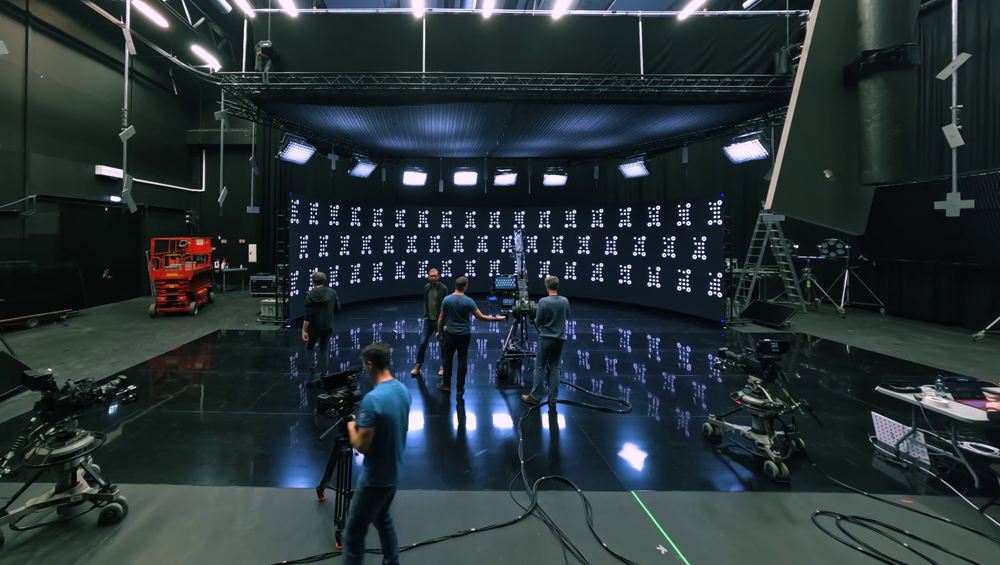
Pixotope XR Edition enables immersive virtual environments for talent at Dota 2 International Championship.
Sticking points typically revolve around three or four points, Davenport says. For starters, he says, broadcasters can be overwhelmed by the complexity of starting to use AR or XR. Camera tracking can pose difficulties, and the broadcaster may have a shortage of staff able to handle the workflow. The final issue, he says, isn’t technical.
“Anything’s possible when you’re in the virtual world. The imagination becomes the limitation,” he says. In that case, he adds, it’s necessary to make the possibilities tangible so people have an idea of how they can use the technology.
Pixotope’s software platform combines real-time video with virtual graphics, which covers AR, virtual sets, XR and CG broadcast graphics.
“That all happens in one engine,” he says.
Pixotope Tracking – Fly Edition (Pixotope Fly), released last October, simplifies AR elements when using drones and cable cameras.
“Rather than rely on sensors or markers in the environment, it just uses the video coming in through the camera lens,” Davenport says. “You can use it with drones and helicopters. It takes the real-time video feed from the drone and applies augmented reality graphics in real time.”
Kathy Skinski, VP of sales for INFiLED North America, says technology is giving broadcasters more tools for storytelling.
And part of that is helping showcase data for the audience.
“News and sports warrants data,” she says. “The audience loves data. They want to know how fast is the pitch going. Taking that data, visualizing it for the audience, is huge.”
And LED walls can help, she says. “I consider the LED as a canvas for creativity. Whatever they want to do with LED, they pretty much can.”
LED appeals because it’s easy to “change content on the fly,” she says.
It can also be used as a set extension, Skinski adds. “It makes it look much bigger. The audience won’t know it’s a small, small room.”
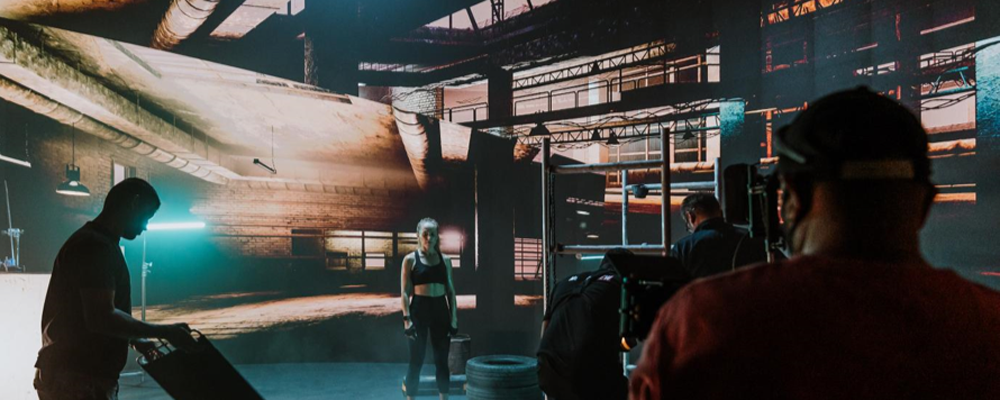
Fractal Studio’s is using an INFiLED LED display in the first XR studio in the UAE.
INFiLED has been providing a combination of flat and curved LED panels to create a seamless curve, she says. The company highlighted the DB and X2 curved series during this year’s NAB Show, she says.
Neoti CTO Aaron Kipfer says LED technology has improved enough that it can be used on camera without seeing “weird moiré” patterns.
“Cameras sense things human eyes cannot,” he says. LED walls “have to perform on camera” so things like refresh rates, scan rates, timing and moiré effect all become important for LED walls in broadcast studios.
Further, videos are no longer constrained to 16 x 9 aspect ratios. As such, he says, the displays can be curved or “funky shapes.”
“It opens doors and allows the designers to put technology in places they never, ever thought they could,” he says.
On the flip side, that means the level of content experience and equipment have also expanded.
But it also means that talent can interact with an LED space differently than they do with green screens, which require them to look at a monitor to see what they’re doing.
“It’s revolutionizing how talent interacts with it because it’s tactile,” he says. “They’re able to see, touch, feel what’s happening in in real time.”
Miguel Churruca, marketing and communications director at Brainstorm, says LEDs have pros and cons. While LEDs may be more convenient in some ways than green screens, he says, they still require props, lighting and production. LEDs also require compute power for rendering, he notes.
Green screens, on the other hand, are “everywhere” and easy to implement. The industry “knows how to do them. We know how it works. We know how to deal with it,” he says. “For us, LED is just a medium.”
Currently, he says, there is a trend to combine green screens with LEDs because they provide different benefits. “You can do all sorts of things at the moment, combining both techniques,” Churruca says.
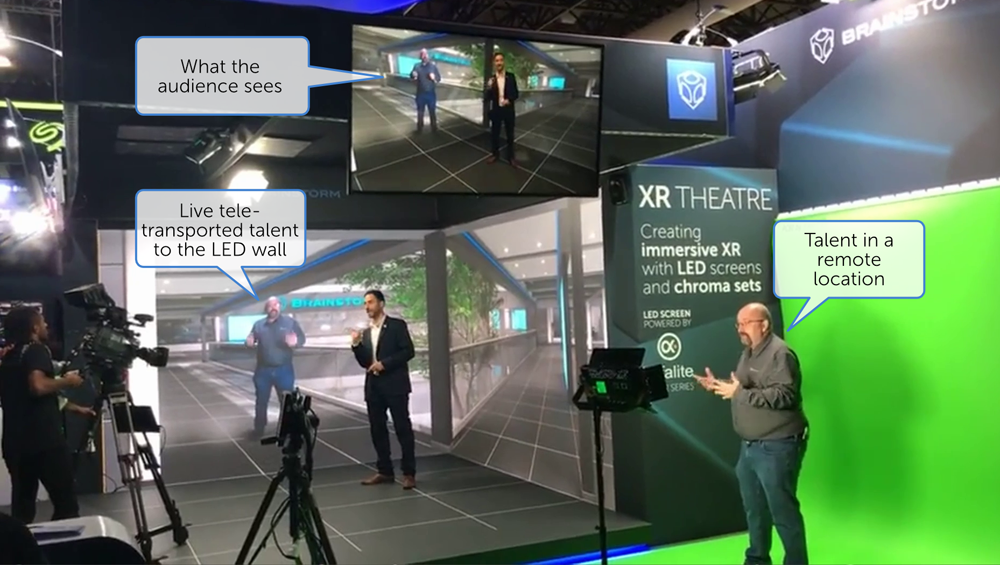
The combination of chroma sets and LED walls allows for talent teleporting and real-time interaction between talents that can be miles away. (Source: Brainstorm)
Convey says broadcasters can do quite a lot graphically without breaking the bank. After purchasing a system like Max Reality, he says, it comes down to content creation.
“There’s a lot that small markets can do without spending a ton of money. They may not reach the level that some big station groups are doing, but there’s still a lot they can do that’s effective to tell the story,” he says.
Chanan S. Averbuch, Prime View USA’s EVP of the Americas, says there’s been an uptick in projects for volumetric LED studios, or XR studios, in which the studio is fully immersive.
As costs for LEDs come down — about a 10% drop year on year for several years — they have gone from “unattainable to affordable,” he says. In fact, high schools and colleges are now creating their own XR facilities with LEDs, he adds.
“They can create unlimited scenery inside the world of LED,” he says.
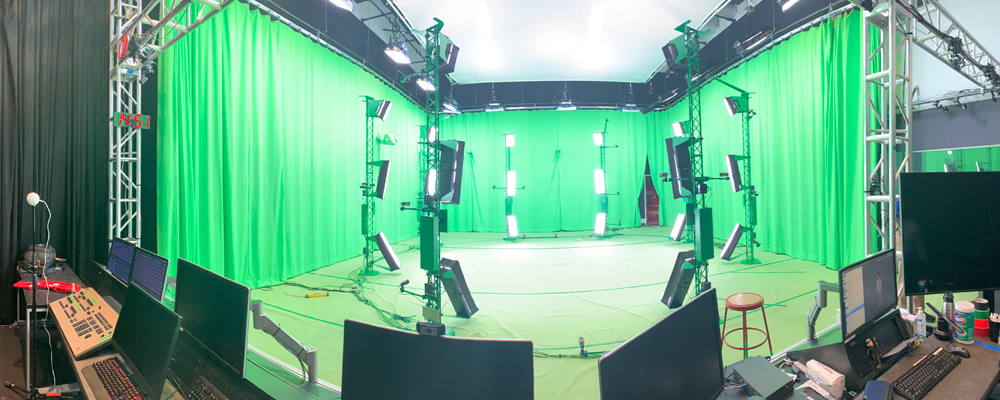
A Prime View old green screen room. (Source: Prime View)
But even if LEDs are limitless, he says, those new to using XR could easily start small, such as with a wall as a backdrop, which won’t take the entire capex budget but will give the team experience producing content using LED.
“Then, in the future, they can add a side wall, a ceiling, a walkable floor LED,” he says. “A car can go on it for sponsorship dollars, and it becomes a promotional thing.”
































Comments (0)